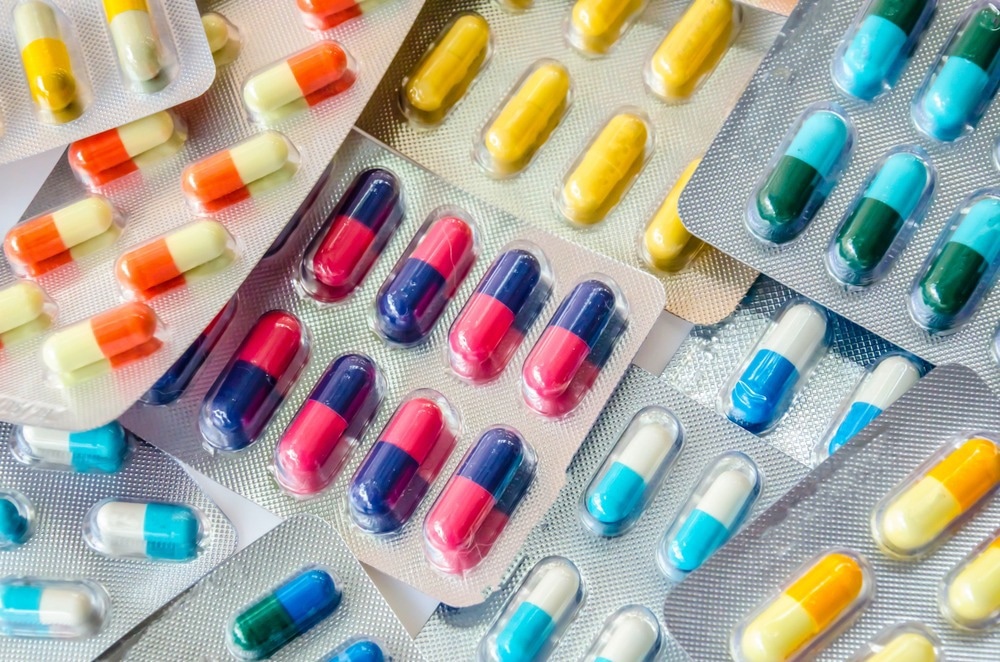In a recent study published in Nature, researchers explored the mechanisms underlying the bactericidal action of teixobactin at an atomic level.

Background
There have been increasing concerns over antimicrobial resistance; therefore, developing antibiotics with novel mechanisms is essential for microbial combat. Teixobactin is an antibiotic that lacks antimicrobial resistance and has shown activity against multidrug-resistant Gram-positive pathogenic bacteria such as methicillin-resistant Staphylococcus aureus, vancomycin-resistant Enterococci, and Streptococcus pneumoniae. The main target of teixobactin is lipid II, a peptidoglycan precursor. An understanding of teixobactin mechanisms could guide drug development.
The authors of the present study previously modeled a complex formed by R4L10 (synthetic teixobactin analogue) and lipid II and showed complex oligomerization into clusters on the surface of membranes; however, the purpose of oligomerization in the bactericidal mechanism of teixobactin needed further investigation.
About the study
In the present study, researchers extended their previous analysis to unfold the bactericidal mechanisms of teixobactin mechanistically.
13C,15N-labelled natural teixobactin was produced by fermentation in its native host Eleftheria terrae. Subsequently, lipid II was synthesized using lipid II precursors polyisoprenolphosphate, UDP-MurNAc (uridine diphosphate-N-acetylmuramic acid)-pentapeptide, and UDP-GlcNAc (UDP- N-acetylglucosamine) as substrate molecules. Subsequently, static 31P solid-state nuclear magnetic resonance (ssNMR) spectroscopy was performed to evaluate teixobactin-lipid II interactions, characterize the lipid II pentapeptide, assess the membrane topology, and study the intermolecular teixobactin–teixobactin interactions.
Fluorescence microscopy was performed to assess teixobactin dynamics in the complex and to probe the accumulation of the complex on the surface of giant unilamellar vesicles (GUVs) doped with Atto 550-tagged lipid II. Further, B. megaterium analogue cells were imaged with a fluorescent teixobactin using confocal microscopy to examine teixobactin oligomerization in bacterial cells. High-speed atomic force microscopy (HS-AFM) was performed to capture the growth of teixobactin-lipid II fibrils and assess bacterial cell membranes' deformation.
Permeabilization assays with Bacillus subtilis were performed to assess teixobactin-induced membrane depolarization and damage. In addition, isothermal titration calorimetry (ITC) analysis and molecular dynamic (MD) simulations were performed to determine the stability of the complex structure. Teixobactin was parametrized for structural calculations of the complex structure in the quartet (4×4) and dimer (2×2) molecular arrangements of the teixobactin and lipid II based on intermolecular teixobactin–teixobactin and interfacial teixobactin– lipid II ssNMR distances.
Results
In the fluorescence microscopy analysis, pyrene excimer fluorescence was observed at 490 nm, confirming oligomerization of the teixobactin-lipid II complex, and the ssNMR analysis confirmed that lipid II-induced oligomerization causes defects in the bacterial cell membranes. Further, multiple cross-peaks were observed in the ssNMR 13C-13C PARISxy spectra of the complex in membranes, corresponding to intermolecular teixobactin-teixobactin contacts (>>10 Å) and interfacial contacts between teixobactin (F1) and lipid II (MurNAc) of >>20 Å.
The generation of antiparallel β-sheets was observed between adjacent teixobactin molecules without clashing of depsi-cycles and was favored by intermittently located d- and l-amino acids of teixobactin molecules. The lysine 3 (Lys3)-alanine 4 (Ala4)-Ala5 pentapeptide residues of lipid II gave signals indicative of the high mobility of residues and their lack of involvement in the complex formation.
E2 and A1 pentapeptide residues gave well-defined signals for natural teixobactin, whereas the K3 residue gave signals indicative of intermediate mobility. ITC thermograms showed strong teixobactin-lipid II binding. In the HS-AFM analysis, fibrillar growth and adsorption on cell membranes were observed at 91 seconds and between 91 seconds to 350 seconds, respectively, with membrane deformation between 1070 and 1468 seconds.
The complex’s membrane topology experiments showed the transfer of magnetization from lipid and water molecules via proton mixing and cross-polarization to 13C teixobactin nuclei. Partitioning of Ile2,5,6 sidechains into membranes and persistence of End10 sidechains in the water phase was observed, and the hydrophobic and hydrophilic residues were sharply separated below and above the β-sheets, respectively.
Structural calculations showed the superimposition of 25 structures and complete intermolecular interactions for the inner dimers in the quartet arrangement of the complex molecules. MD simulations showed strong binding between enduracididine sidechains on the N-terminal of teixobactin with PPi (pyrophosphate) of the lipid II molecule, facilitating the capture of the target.
β-sheets formed by teixobactin bound to the lipid II molecule of the bacterial cell membrane formed a supramolecular fibrillar structure that potently sequestered lipid II and displaced phospholipids, leading to thinning and reduced integrity of membranes. Hydrophobic teixobactin residues anchored the drug to bacterial cell membranes and produced a concentrated patch of hydrophobicity when combined in the supramolecular structure. The concentration of lipid II’s C55 tails in the hydrophobic patch led to membrane damage by causing ion leakage and a resultant drop in membrane potentials. Teixobactin could corrupt the target site by transforming the target into a cell membrane disruptor.
Conclusion
Overall, the study findings elucidated the bactericidal action of teixobactin. The supramolecular structure formation by the drug is a stark departure from traditional antibiotic actions. The drug’s combined mechanisms of peptidoglycan synthesis inhibition and membrane disruption provide a great strike on the cell envelope of bacteria without antimicrobial resistance due to target corruption. Further, teixobactin is a safe antibiotic with selective disruption of membranes only on the formation of the supramolecular structure, which only forms if the membrane comprises lipid II.
- Shukla, R. et al. (2022) "Teixobactin kills bacteria by a two-pronged attack on the cell envelope", Nature. doi: 10.1038/s41586-022-05019-y. https://www.nature.com/articles/s41586-022-05019-y%E2%80%A6
Posted in: Medical Science News | Medical Research News | Disease/Infection News
Tags: Alanine, Antibiotic, Antimicrobial Resistance, Atomic Force Microscopy, Bacillus Subtilis, Bacteria, Cell, Cell Membrane, Confocal microscopy, Fermentation, Fluorescence, Fluorescence Microscopy, Ion, Lysine, Membrane, Microscopy, Molecule, Spectroscopy, Staphylococcus aureus, Streptococcus pneumoniae, Titration

Written by
Pooja Toshniwal Paharia
Dr. based clinical-radiological diagnosis and management of oral lesions and conditions and associated maxillofacial disorders.
Source: Read Full Article